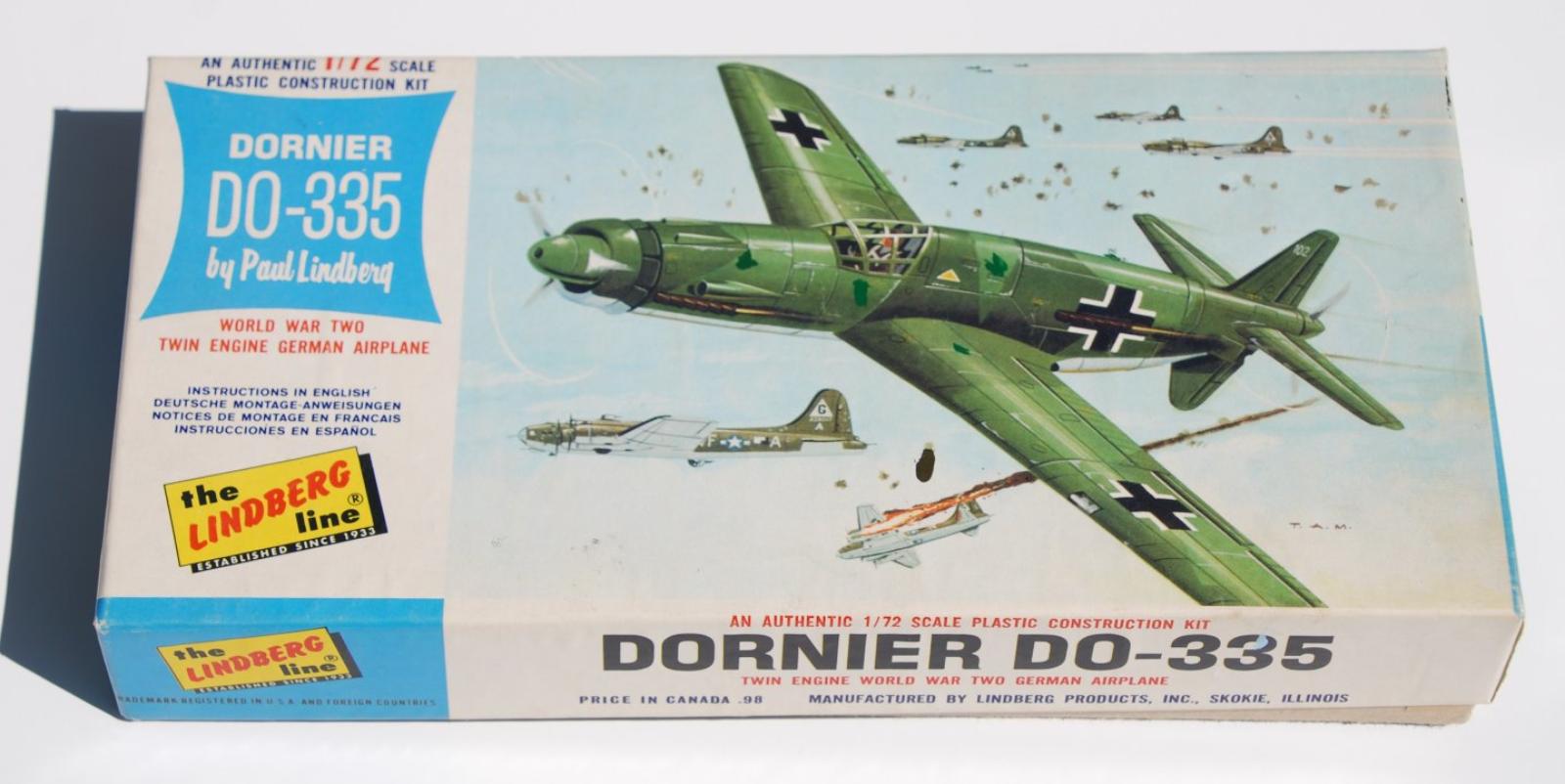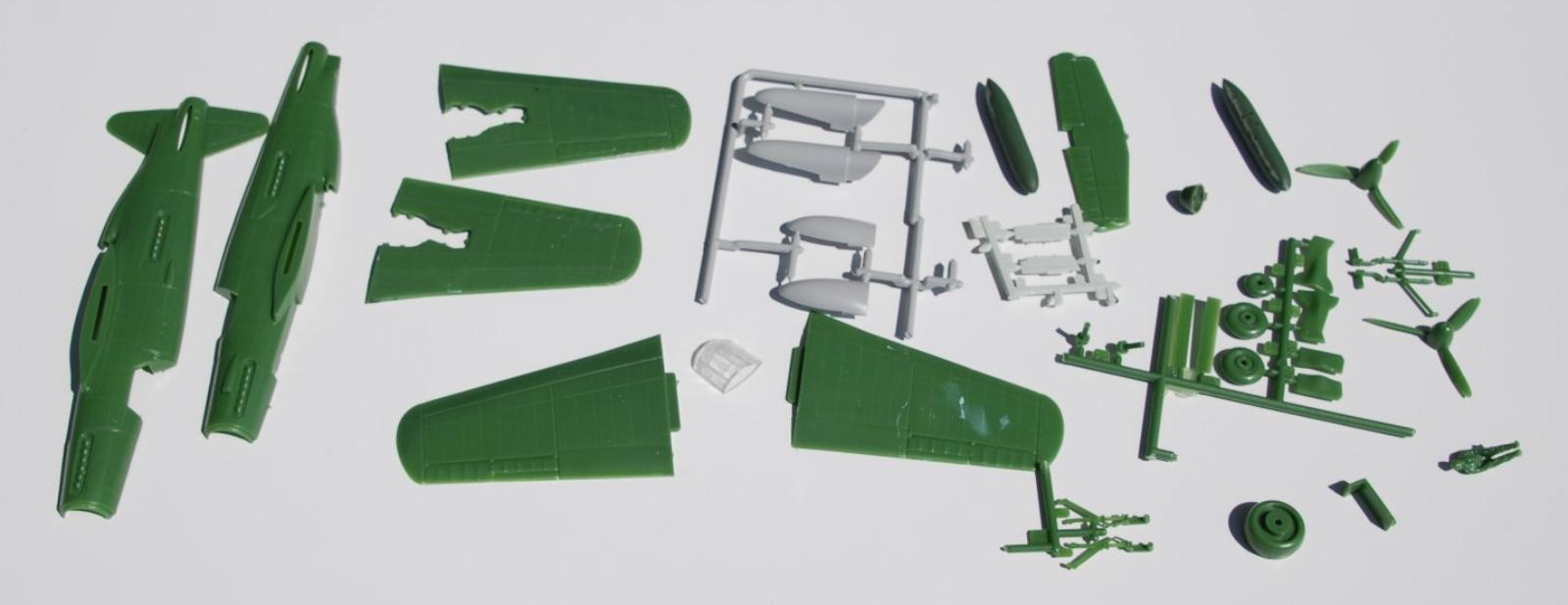Manufacturer: Lindberg
Scale: 1/72
Additional parts: additonal parts from the spare part box
Model build: Jul-Sep 2015

Manufacturer: Lindberg
Scale: 1/72
Additional parts: additonal parts from the spare part box
Model build: Jul-Sep 2015
Captain Franz Ritter slammed his fist on the cockpit console. Rain lashed against the canopy, blurring the already fading light outside. "This is madness, Kessler!" he yelled over the roar of the front engine.
"Madness or a chance, Herr Captain," replied Lieutenant Kessler, his voice tight with concentration. "We either get this prototype airborne or it falls into Soviet hands."
Franz glanced back through the fuselage. The Do 335 TL, a Frankenstein's monster of a plane cobbled together from Dornier's last-ditch efforts, was no ordinary fighter. Its forward Daimler-Benz engine hummed predictably, but nestled in the rear – the plane's true marvel – was a temperamental newfangled jet engine, the future of flight… if it held together.
Outside, a harried ground crew chief yelled, signaling Franz to taxi. He gritted his teeth. This plane was a gamble, a technological marvel cobbled together from desperation. Intelligence reports indicated the Soviets were closing in on their base, and the Do 335 TL represented their only chance to defect with this revolutionary technology.
As Franz steered the lumbering plane down the rain-slicked runway, the jet engine in back sputtered and coughed, a fiery dragon reluctant to awaken. Sweat beaded on his brow. He needed speed, desperately. Just as the runway seemed to be ending, the jet finally roared to life, pushing the Do 335 forward with a surge of power that surprised even Franz, a veteran pilot.
They were airborne, but hardly out of the woods. Franz weaved through a thick curtain of low clouds, dodging bursts of anti-aircraft fire that erupted from below. His wingman, a young pilot named Hoffman, sputtered on the radio, "Captain, bogies on our tail! Three La-7s!"
Franz cursed. La-7s, some of the fastest fighters the Soviets possessed. He pushed the Do 335 TL to its limits, the jet engine screaming in protest. The La-7s were relentless, closing the distance with alarming speed.
Suddenly, inspiration struck Franz. The Do 335 TL wasn't just fast – its unique design offered superior maneuverability at high speeds. He threw the plane into a series of daring, high-G maneuvers, the La-7s struggling to keep pace. One by one, they overshot, their frustrated pilots spewing curses in broken German.
With a final burst of speed, Franz cleared the border into neutral airspace. The rain had stopped, and a sliver of moon peeked through the clouds, illuminating a path to freedom. Franz let out a shaky breath; they'd made it.
The Do 335 TL, a cobbled-together dream of a plane, had not only secured their freedom, but also carried with it the potential to revolutionize air combat. As they flew towards a new dawn, Franz knew this was just the beginning of the jet age, an age they had played a daring, pivotal role in. The Do 335 TL, a speculative variation on a bygone design, had become the key to their, and perhaps the world's, future.

The Dornier Do 335 “Pfeil” was one of the most radical aircraft of the late Luftwaffe. Its push-pull twin piston layout gave it remarkable speed for a prop-driven fighter, but its complexity and reliability problems prevented widespread deployment before Germany’s defeat.
Yet Dornier engineers believed in the potential of the Pfeil’s centerline thrust concept. In late 1944, as part of the Notjägerprogramm (Emergency Fighter Program), they proposed a bold modification: replacing the troublesome rear Daimler-Benz piston engine with a Heinkel HeS 011 turbojet, while retaining the forward piston engine for range and reliability. This concept became the Do 335 TL (Turbinen-Luftstrahltriebwerk) — a hybrid fighter meant to bridge the gap between piston and jet technology.
Construction of the first prototype began at Oberpfaffenhofen in January 1945, using the fuselage of an unfinished Do 335A-6. Modifications included a shortened tail boom, enlarged twin fins raised above the jet exhaust, reinforced wing tanks, and structural changes to accommodate the jet installation.
By March 1945, the sole Do 335 TL V1 was completed. With the Allies closing in, the aircraft was rushed into flight testing under the supervision of test pilot Hans Dieterle, who had earlier flown the Me 262.
The maiden flight occurred on March 19, 1945 at Oberpfaffenhofen airfield. Using only the front Daimler-Benz DB 603 piston engine, the aircraft handled much like a standard Pfeil. But when the HeS 011 was engaged, the Do 335 TL surged forward with unprecedented speed. Test observers noted a top speed of 915 km/h in level flight — faster than any operational piston aircraft of the war, and competitive with early jet fighters.
Climb rate was equally impressive: the hybrid power allowed the prototype to reach 8,000 meters in under 9 minutes, a figure surpassing the Me 262. However, fuel consumption with both engines engaged was extreme, and endurance was limited to less than 40 minutes of mixed operation.
In April 1945, the Luftwaffe ordered the Do 335 TL into emergency trials with Erprobungskommando 335 at Rechlin. The aircraft flew four evaluation sorties against simulated bomber formations, firing its nose-mounted 30 mm MK 103 and wing-mounted 20 mm MG 151/20s. Test pilots praised the stability at high speeds but complained that the transition between piston and jet operation required careful management.
Plans were made to deploy the aircraft with JG 7 “Nowotny”, alongside Me 262 jet fighters, for interception of American B-17 and B-24 raids. However, with only one prototype available and Allied forces advancing rapidly into Bavaria, these plans never materialized.
The Do 335 TL V1 was evacuated from Oberpfaffenhofen in late April 1945. According to eyewitness accounts, it was flown once more toward Prague, where it was ultimately abandoned. Some sources suggest it was captured intact by Soviet troops and later evaluated in the USSR, though no concrete proof has surfaced.
Had it entered production, the Do 335 TL might have been the Luftwaffe’s most advanced hybrid fighter — a transitional machine combining piston endurance with jet speed. In the end, it was too late, too few, and too experimental to influence the outcome of the war.
Still, the solitary flight tests in March 1945 ensured the Do 335 TL its place as one of the most unusual and daring projects of the Third Reich’s final days.
The model shows one of the Do 335 TL prototypes preparing for take off in late April 1945.

Its based on an old, simple 1/72 scale Lindberg kit I got form ebay, the kit was already started. Additional parts are form a Me262 (jet engine) and the spare parts box (air intakes, drop tanks). Painted with Revell Aqua Color, I used the oringal decals plus some form the spare part box.